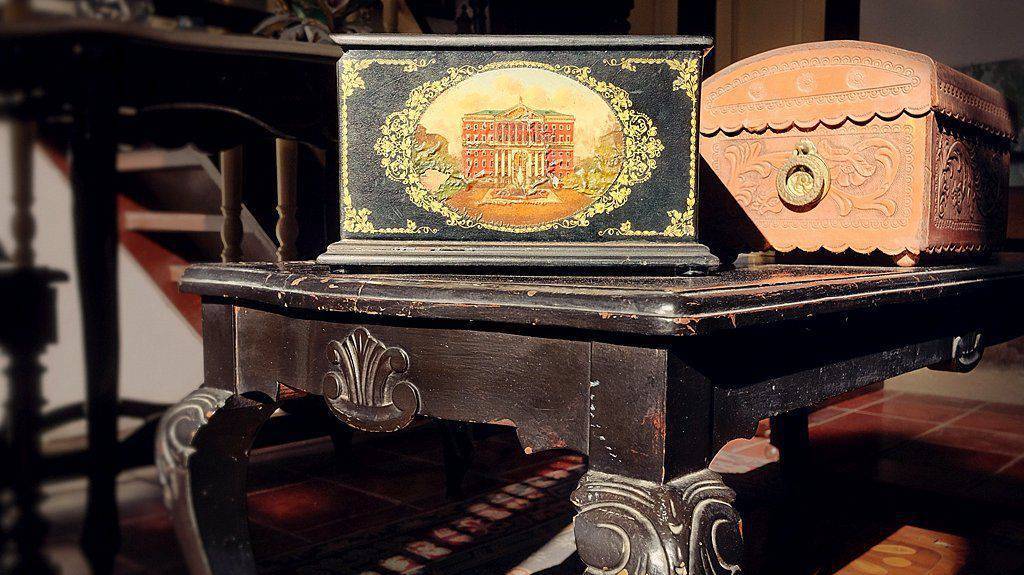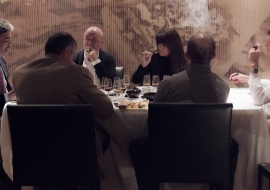A Closer Look at the Tobacco Museum in Havana

The collecting of objects related to Cuba’s tobacco industry is no stranger to that aforesaid development. The fact of presenting Cuba’s black tobacco as the very best in the world actually triggers smokers and nonsmokers alike to passionately cherish habanos and utensils linked to the habit of smoking.
The ever-growing demand for Cuban tobacco served as a reason for a great need to step up production, a condition that made hundreds and hundreds of factories pop up, many of them with international prestige tacked on them from the very beginning. Branders had a response of their own with rings and bands -the result of the evolution of lithographic art in Cuba- and in the same breath, collectors starting treasuring these paper wonders that were already flooding the entire world.
Vitolphilia or the art of collecting cigar bands is the most widespread of all, since aficionados organize their own exhibits, share and exchange pieces, define the themes that mark their collections and determine how old those artifacts really are. They are, in a few words, faithful and passionate advocates of this art. But the concept gets enhanced and memorabilia, coupled with other expressions of tobacco collecting, joined the conception. Quite a large number of those people augmented their collections with tobacco pouches, smokers’ utensils, matchboxes, documents, bibliography, furniture and other tobacco-related products.
How can those private collections, with the consent of their owners, be exhibited in certain moments for the sake of society, to be admired and used as educational tools, to enrich the culture of the visiting public, showing them what the history and the art around Cuban tobacco have really been like?
In literary works that tackle this matter, they permanently underscore museums as institutions that should socialize this endeavor and its management in a bid to have a much broader public influence and foster information, being this a manner to benefit cultural tourism and achieve enrichment every step of the way.
On the basis of these considerations, it’s easy to comprehend the significance of having Dr. Eusebio Leal Spengler, director of the Havana Historian Office, found on February 26, 1993 the Museum of Tobacco or the Halls of Tobacco Culture.
Collections of piles, tobacco pouches, cigarette cases and holders, ashtrays, humidors, trophies, oil paintings, decorative artworks, bands, rings and brandings, documents, bibliography and other artifacts, are painstakingly and passionately taken care of by a small staff of employees who juggle several hats in the museum, such as ordering, studying, watching and preserving, working day in and day out to keep two exhibition halls and two entrance halls open.
Bands, rings, lids, nail covers, lapels, leaves, side leaves and fillets, among other elements, stand out as some of the most interesting collectible items. From the oldest lithography to chromo-lithography, the inclusion of the gold leaf in printing works and the use of glitter, metallic powder and other additions are sometimes hard to make out to a naked eye.
Another major collection is the one dedicated to pipes that, as we all know, were used since prehistoric times. In the course of their evolution, pipes have been built with stones, reeds, bones, metals, wood and other materials, all of them in display in this museum.
At the same time, a sample of tobacco pouches is also significant. Since the 1950s, handcrafters started manufacturing these lovely cases, in a variety of materials, that used to lodge the top-of-the-line tobacco and cigars inside those deluxe containers.
Other pieces, considered smokers’ items and utensils, show their formats, artistic designs, array of materials, curiosities linked to the way they were built, their dates, brands and everything related to telling the history of this art linked to the smokers’ atmosphere are also shown.
The values cherished at the Tobacco Museum of the Office of the City Historian will continue open to the community and to all those visitors willing to learn about the tobacco culture.










